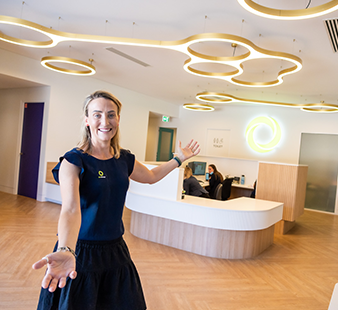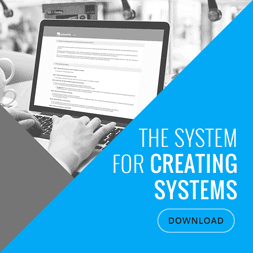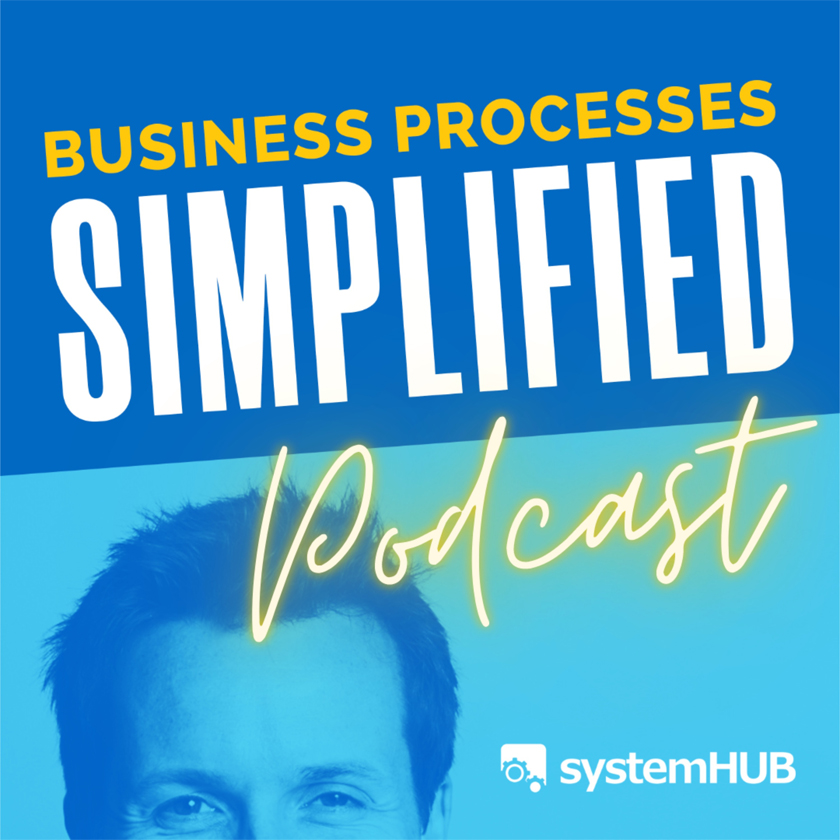In the serene backdrop of rural Australia, Renee Kelly transformed her small occupational therapy practice into Lime Therapy, a thriving allied health clinic with nearly 40 team members. While her vision and passion fueled the clinic’s growth over 15 years, Renee faced a common entrepreneurial challenge: how to maintain quality and consistency while scaling.
And this is how implementing systematic processes became the missing puzzle piece in her business growth journey.
The Challenge: Growth Without Guardrails
Renee never considered herself a “systems person.” As a self-described big-picture thinker, she excelled at vision and strategy but struggled with the details of execution.
“I’m a really big-picture person. ‘Let’s do this. This is amazing. I’ve got an idea.’ And someone will say, ‘But how do we do that? And what are the steps?’ ‘Don’t worry about that. That’s okay. We’ll get to that!'” Renee explains.
This approach worked when Lime Therapy was smaller, but as the team expanded to include physiotherapists, speech pathologists, exercise physiologists, and support staff, inconsistencies began to emerge. Despite having policies in place, the team wasn’t achieving the consistent quality and service delivery that Renee envisioned.
For years, she invested in external coaches and consultants, spent significant money on policy development, and tried various approaches—but nothing quite “hit the mark in quality, sustainability, consistency.”
The Turning Point: Finding the Missing Piece
The breakthrough came unexpectedly during an online course where Renee encountered a young therapist talking about SYSTEMology.
“This light bulb went off in my head and I went, ‘Oh my gosh, if only I read that book when I was that therapist’s age.’ She understood the value of having systems in place and how that was going to allow her to get the best out of the service,” Renee recalls.
Renee immediately ordered the SYSTEMology book and couldn’t put it down. She finally understood why their extensive policies weren’t translating into consistent results—they needed practical, accessible systems that the team would actually use.
“SYSTEMology was one of those moments. SYSTEMology was one of those, ‘Ha! This is what’s missing.’ So it was, yeah, it was exciting.”
Implementation: Building Systems from Within
After reading the book, Renee committed to the SYSTEMology Catalyst program and took several key steps:
- Identified the right Systems Champion—not herself or her husband Matt (the accountant), but Caleb, a therapist who was only a couple of years into his career
- Prioritized their Critical Client Flow (CCF) and Direct Revenue-Generating Tasks (DRGT) to focus systemization efforts where they mattered most
- Documented their first system around invoicing, which processed over 2,000 invoices monthly—a critical task previously known by only one person
- Incorporated systemization into their regular team meetings and conversations
- Made systems part of their company culture by celebrating wins and encouraging the team to identify opportunities for new systems
- Committed to the process despite initial hesitation about the time investment
The Impact: Transforming Business Operations
Within six months, Renee witnessed remarkable changes in her business operations and team dynamics. The most immediate win came from systemizing their invoicing process—turning a vulnerable single-person dependency into a robust process anyone could follow.
“We’ve now got the administration team who are efficient when that person isn’t here. They can now do that task and it’s not daunting. We haven’t got three weeks of batching and invoicing sitting there because this one person’s away,” Renee explains.
More significantly, the team’s attitude toward systems completely transformed. What began as a top-down initiative became an organic part of the company culture, with team members spontaneously suggesting: “We should have a system for that. Let’s systemize this.”
According to Matt, Renee’s husband: “The time has decreased tenfold, with what I say, combination with software and systemizing and that will take improvement once that system becomes tighter and tighter.”


Key Lessons for Allied Health Practice Owners
- Systems are fundamental to sustainable growth: “This is fundamental. As James said, every opportunity and every problem can be solved with a system.”
- The right Systems Champion makes all the difference: “Identifying the Systems Champion as not being us was probably the biggest driver.”
- Systemization changes company culture: “I didn’t realize that SYSTEMology would actually become part of our culture and you can’t change that externally.”
- Business owners must lead the systems initiative: “Culture starts with your business owners.”
- Trust the process: “Trust the process, this really works. I wished I’d just sat and enjoyed it more at the start.”
Renee’s journey with Lime Therapy demonstrates that systems aren’t just operational tools—they’re the foundation for sustainable business growth. By committing to systemization, she transformed both her business operations and team culture.
“We look at our business, our service, and what we want the outcome to be now with a systems approach,” Renee reflects. “I couldn’t have dreamed that that would have happened.”
Ready to Scale Your Allied Health Practice?
Struggling with inconsistent quality or feeling like you’re the bottleneck in your allied health practice? Discover how creating simple, effective systems can help you scale while maintaining clinical excellence. Contact us today to identify your biggest opportunities for systemization.









